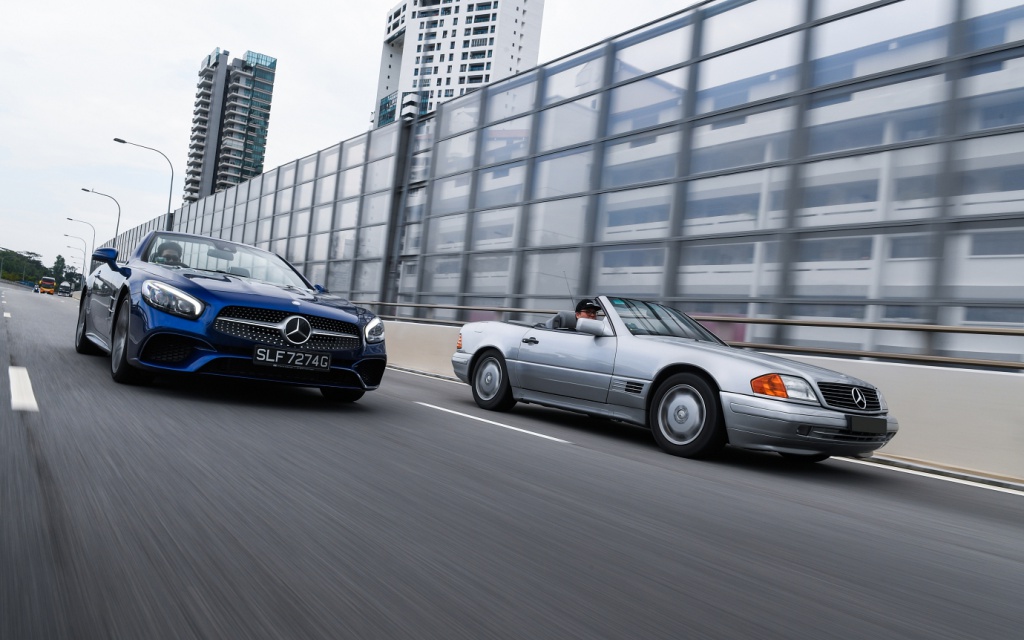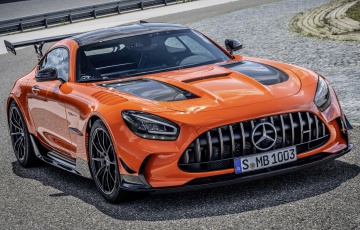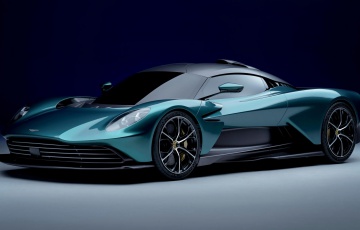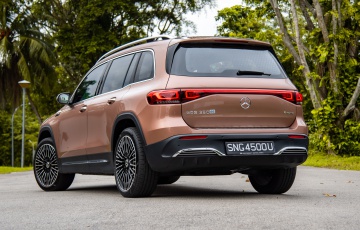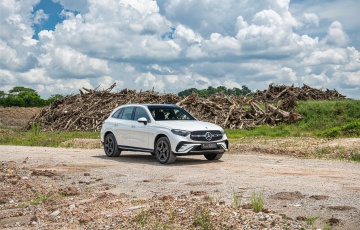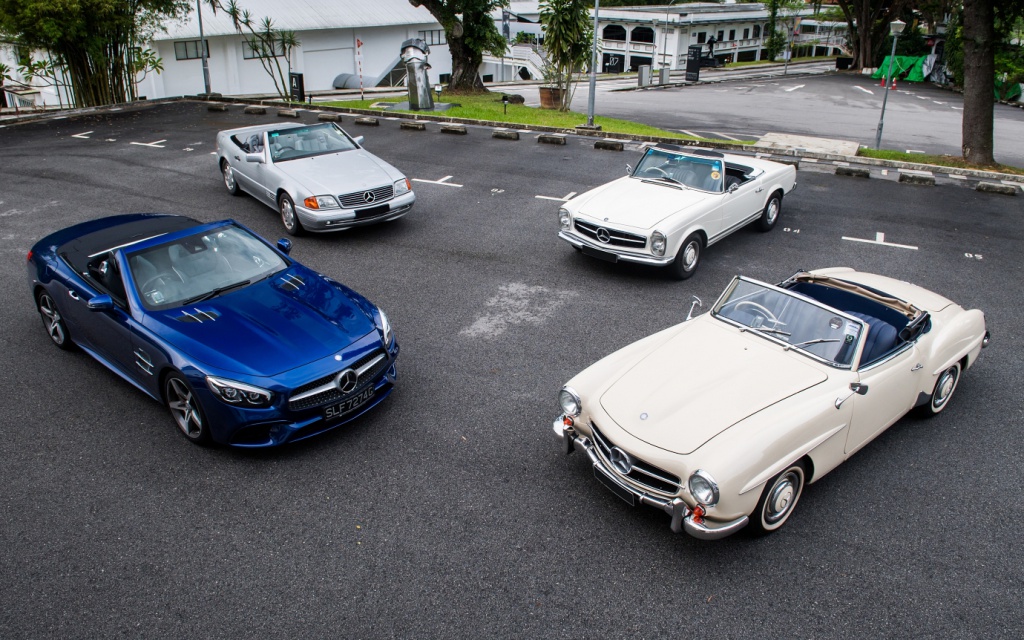
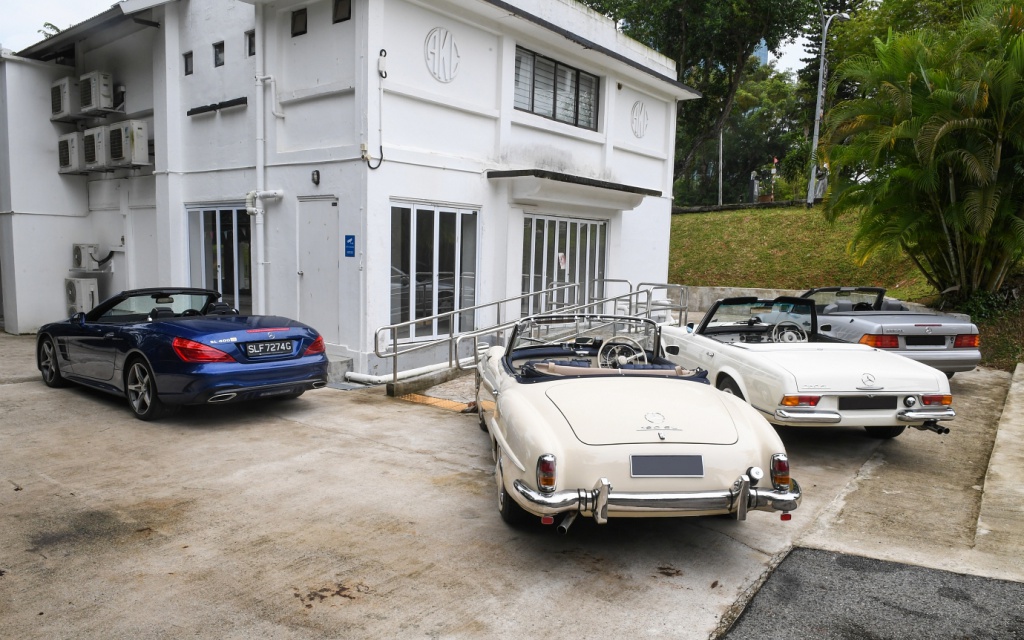
Mercedes-Benz W121 190SL, W113 280SL Pagoda, R129 300SL, R231 SL400 Drive Review : Star-Light Express
Singapore – Have you ever wondered why some brands continue to engender the sort of reverence and passionate fervour in its fans that is more commonly reserved for pop culture icons?
Now consider this in contrast to more flash-bang marques, who fast and furiously create one new model after another in the hope of cashing in big with the right niche product at the right time.
From the one-colour-option only for the Ford Model T, there’s now a smorgasbord of not just colour and trim choices, but also equipment grades and body-shapes.
Brands with a rich heritage understand the importance of preserving its core values, as opposed to ‘new’ for the sake of it.
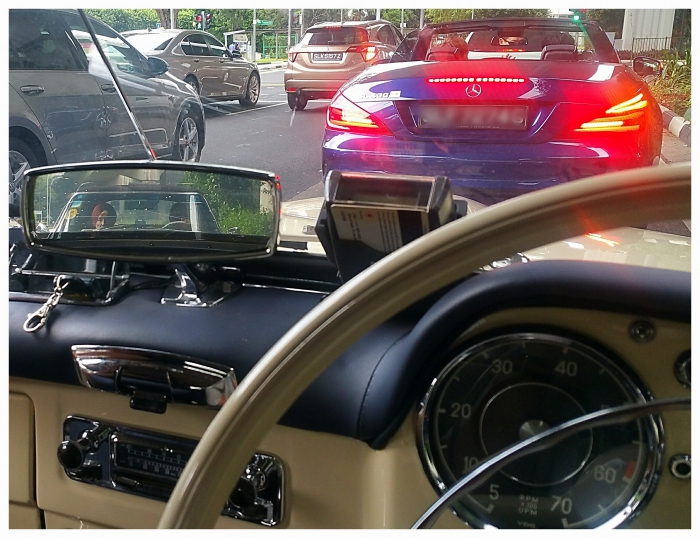
As an automotive brand, Mercedes-Benz is probably as evergreen as Rolex, so every feature or aesthetic element that finds its way into each car is considered and contemplated, with nothing forced in for the sake of keeping up appearances.
For instance, take a look at Rolex, and then look at some of the other watch brands that scurry around chasing the market.
Apart from some new converts who will just as quickly drop it when the next new comes along, repeated paradigm shifts only succeed in ostracising its band of purist followers.
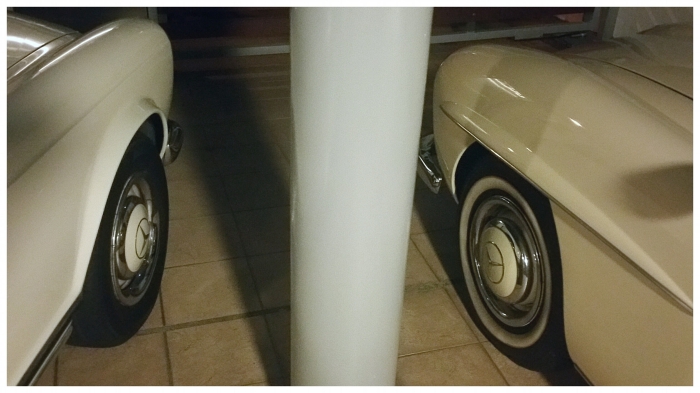
Of course, if you’re the sort of buyer who clamours after the glitzy and the new and something that is constantly changing, you’re better-off looking at a brand like Hublot instead of raging at the immutable Rolex.
The glacial pace of change is often criticised, but don’t forget, Mercedes-Benz is nevertheless one of those brands that sees entire extended families buying their products, generation after generation after generation, so they have to be doing something right.
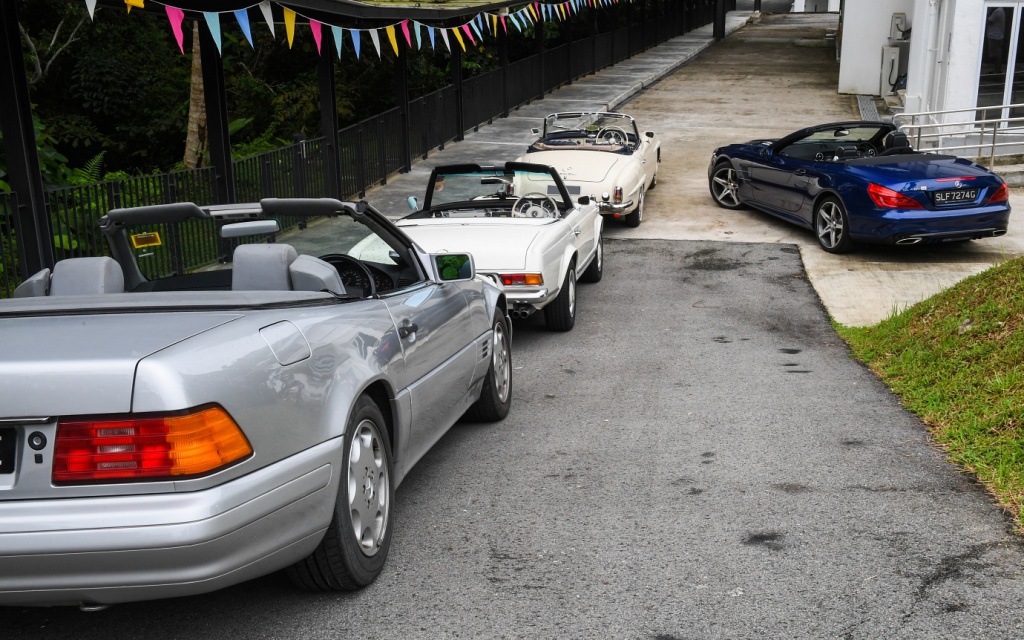
The Mercedes-Benz SL-class is the brand’s roadster grand tourer that has the occasional spark of sporty brilliance, but it’s not intended to be an outright sportscar like the gullwing 300 SL original with which it shares the ‘SL’ name.
It will however allow its owner to cover huge miles in pliant comfort while enjoying the benefits of a hard-top’s security with the lifestyle cachet of a drop-top, and topped-off with sometimes as much technology as the S-Class.
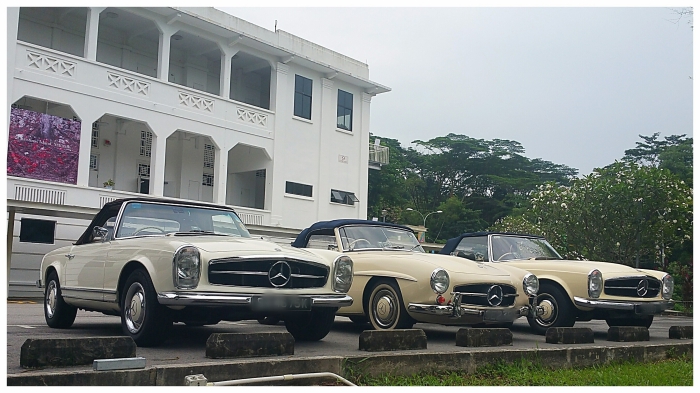
Traditionally, the cars bearing the SL badge are tuned for high-speed comfort and stability rather than tight dynamic performance, although that’s not to say they can’t acquit themselves well when push comes to shove on the winding roads.
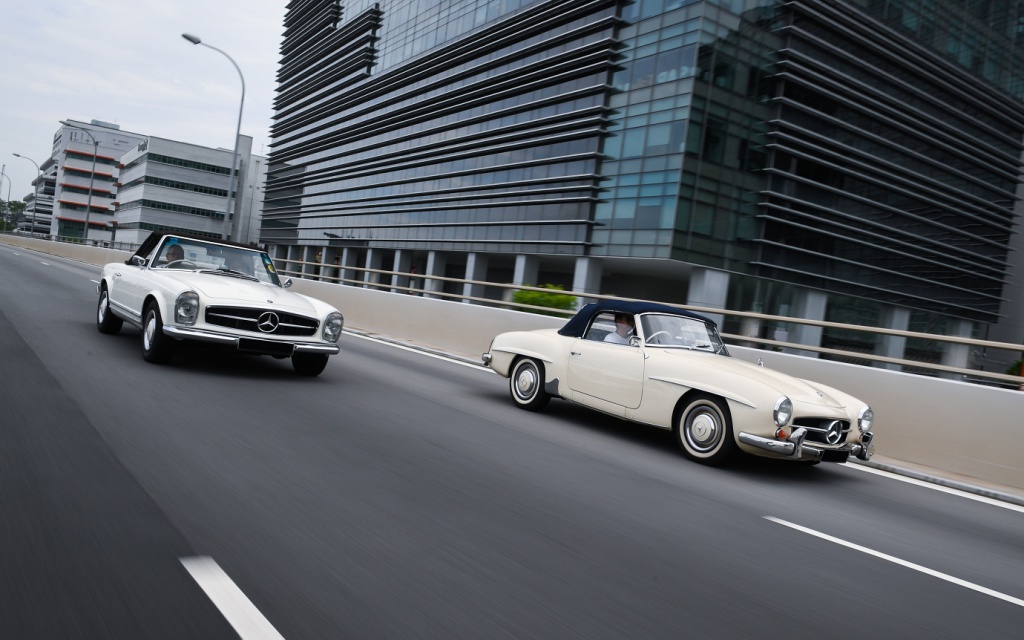
I think it’s only fair to clear the air right at the start, so a little background first: Mercedes-Benz developed two branches of the SL line following the introduction of the very first ‘SL’ (Sport Leicht, or Lightweight Sports), the iconic W198 300 SL ‘gullwing’ coupe model in 1954.
This was the fastest production car of its time and came complete with race-ready ‘knock-off’ wheels, tubular spaceframe chassis and big horsepower from a fuel-injected straight-six engine – a road-going rolling homage of sorts of the W194 race-car that was also badged ‘300 SL’.
A 300 SL roadster would eventually follow in the late 1950s, but like the original ‘gullwing’ sibling, we reckon that the modern, spiritual successor to the 300 SL is actually the SLS (and SLS roadster), and not the modern SL-class, especially since the 300 SL roadster was launched only after the 190 SL.
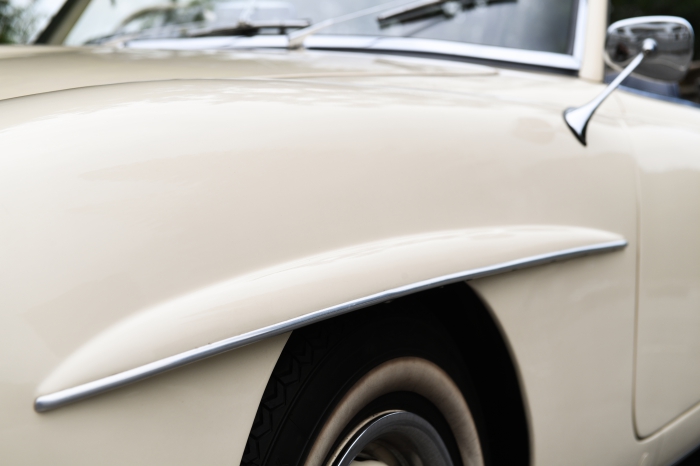
Today’s SL comes from more modest roots, even though it inherits the ‘SL’ moniker from the gullwing cult classic. If you’re content to not dig too deeply into things, you might happily consider the gullwing a progenitor of the modern SL.
However, Mercedes-Benz had also developed a sports-roadster ‘tourer’ type car in parallel with the 300 SL, which it unveiled to the world as the 190 SL (W121 B2) at the very same New York International Motor Show that saw the debut of its racy 300 SL big brother.
And it is this model that would spawn the ‘SL’ as we know it today.
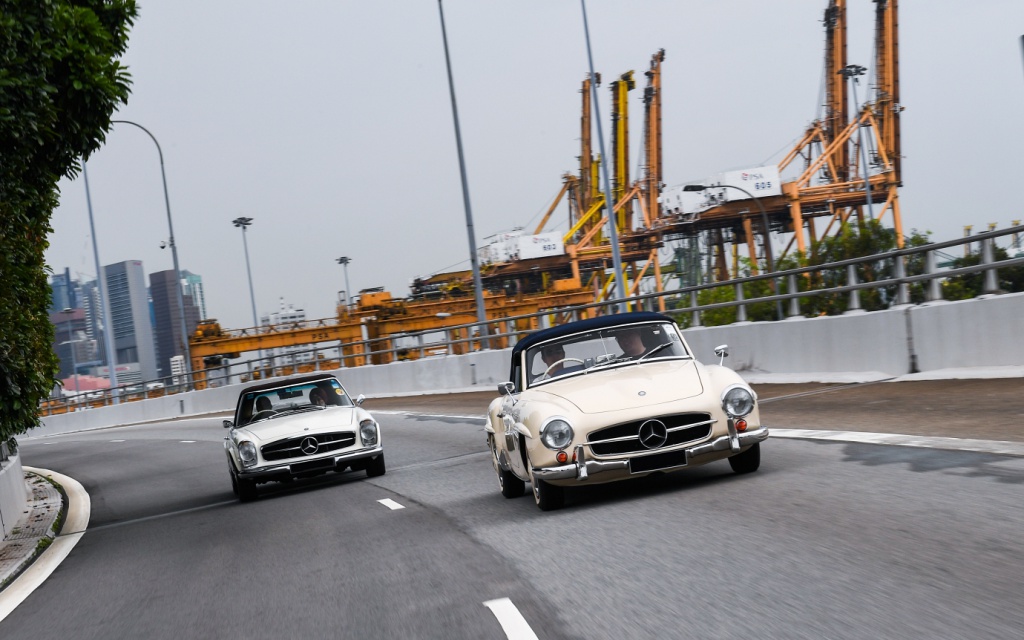
Latte & Flat White – 190 SL (W121 B2) / 280 SL (W113)
Bearing in mind the 190 SL was developed over the same period as the 300 SL gullwing, there are certain familial similarities and styling cues, especially the front grille and aerodynamic fairings over each front and rear wheel-arch.
However, compared to its race-bred counterpart, the 190 SL was an entirely different personality, albeit one that’s no less evocative.
It shared the technical underpinnings with the ‘Ponton’ W121 sedans and had a variant of the Ponton 190’s four-cylinder 1.9-litre engine with dual-carburetors under its bonnet.
True to SL form, a detachable hard-top was also available, and this is something that would endure all the way to the R129, which was the last SL to feature a separate hard-top.
All the SLs following that came with retractable hard-tops, just like the latest SL 400 we have in this company.
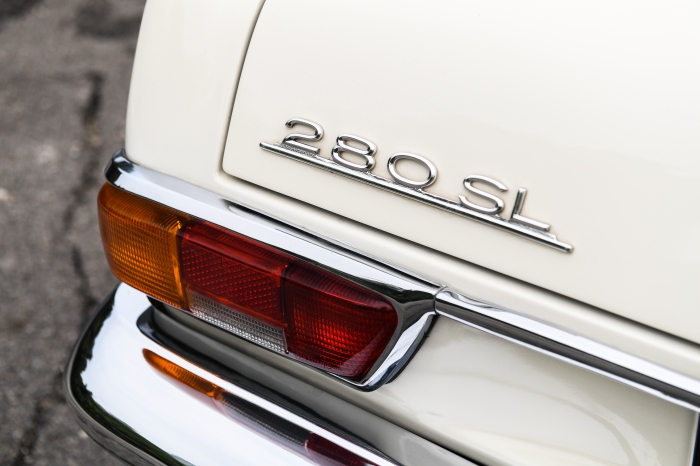
By 1963, the W113 successor to the 190 SL arrived on the scene.
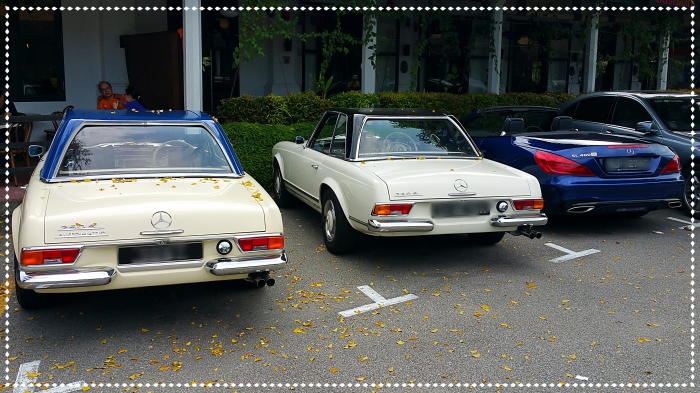
This generation was also known as the ‘Pagoda’, which was coined for the distinctive silhouette of the dropped centre section of the roof from the rear when the hard-top was in place – it was said to resemble the roof of a pagoda and the name stuck ever since.
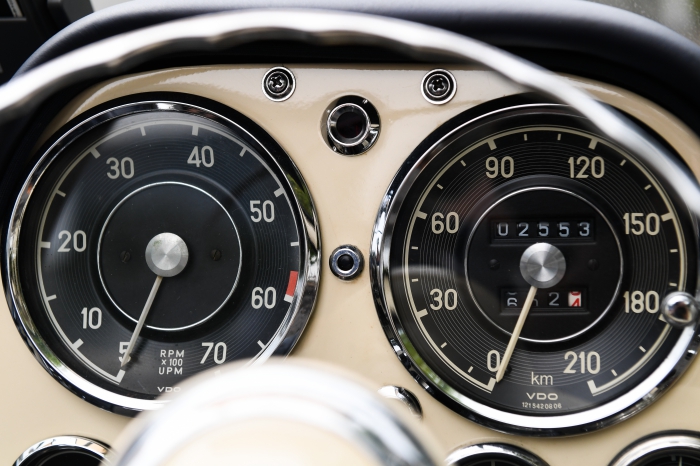
Compared to the complicated digital control panels found in modern cars, the 190 SL’s dashboard is wonderfully ornate, theatrical even.
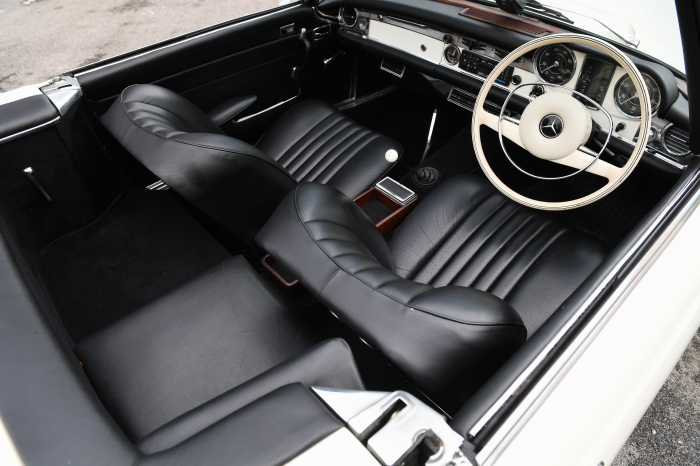
Likewise, the Pagoda’s cabin boasts the same sort of attention to detail as its predecessor, although to our eyes it seemed a little more functional than dramatic.
It’s not just about the patina and smell of these old-timers, but the feel of the controls, as well as the analogue dials and instruments exude a strong sense of purpose and intent, especially since you’re actively monitoring operating temperatures and pressures during every drive.
It’s this sort of active involvement that we no longer find in modern cars, because part of the joy of driving includes paying attention to the details, as you analyse the little niggles in your head to ensure everything’s running fine.
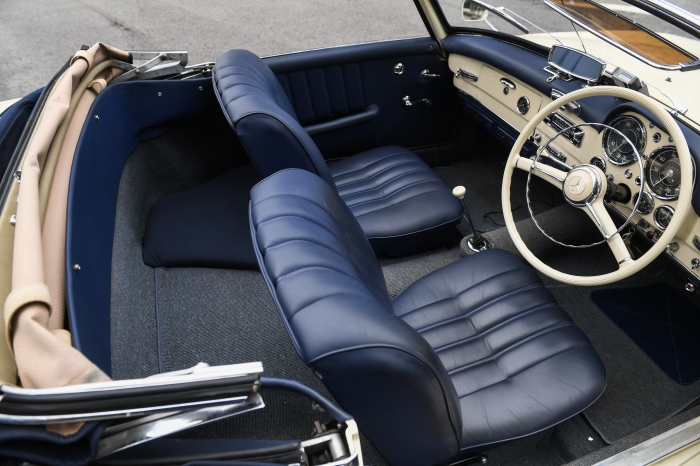
Like the ‘Pagoda’ W113 SL that would replace the 190 SL, there’s a pair of plump front seats and a rear lateral seat for a single passenger, where the rear occupant sits sideways.
Unlike the Pagoda though, the soft-top on the 190 SL is a doddle to put up (and down) with just one arm, especially if you’re out and about and it starts to rain.
If you’re angled just right, you can raise it from top-down position while sitting in the driver’s seat.
Also, unlike the W113 and R107 that would succeed it, you didn’t need to fuss around with loose handle tools to release the roof mounts on the 190 SL, since the hinges to lock the soft-top were part of the car.
On the other hand, the Pagoda requires a manual release of the body-coloured metal tonneau cover before the soft-top can be unfurled.
Like the 987 Porsche Boxster Spyder there’s a certain technique to raising (and lowering) the Pagoda’s roof that doesn’t suffer rushed and botched attempts.
A main reason that led to the shift from the 190SL’s easy-to-use integrated securing points for the roof were the US collision regulations, which meant Mercedes-Benz had to replace those points with separate ‘release levers’ that were kept in a pouch when not in use.
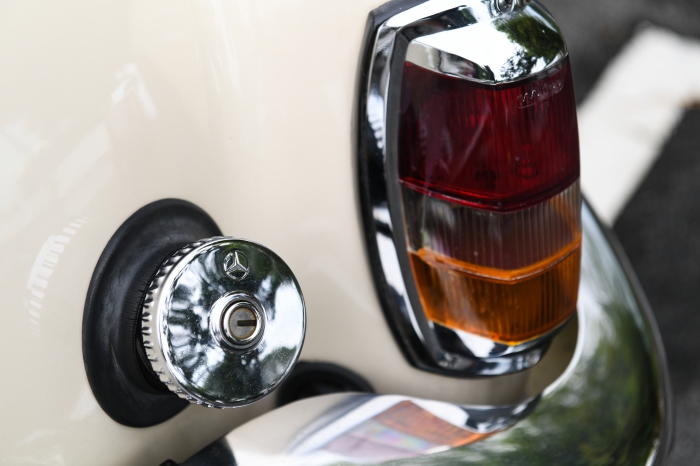
Old cars certainly turn their owners towards religion: it’s not uncommon to say a little prayer before the car is first started for the day, and then again as you’re pottering around in heavy traffic.
However, if there’s one thing it’s isn’t, it’s a love-hate relationship, because you can’t hate an old car any more than you can hate an old person – if anything, you develop patience and a delicate sensitivity to its state of health.
The luscious latte body colour of the curvy 190 SL is tastefully contrasted against the blue soft-top and matching blue Nappa leather interior to create an impression of timeless elegance.
The dainty 190 SL is a pretty little thing that is closer in size to today’s SLK-class than its modern SL counterpart.
Both the W113 and W121 B2 boast soft, almost feminine lines to their styling but never to the extent that men would feel emasculated driving them around, even with the top-down.
In fact, we received plenty of discreet nods of approval during our time with the cars, although you had the occasional douchebag in one of those small-engined turbo’d cars who felt the need to demonstrate his masculinity by blasting past our classic convoy.
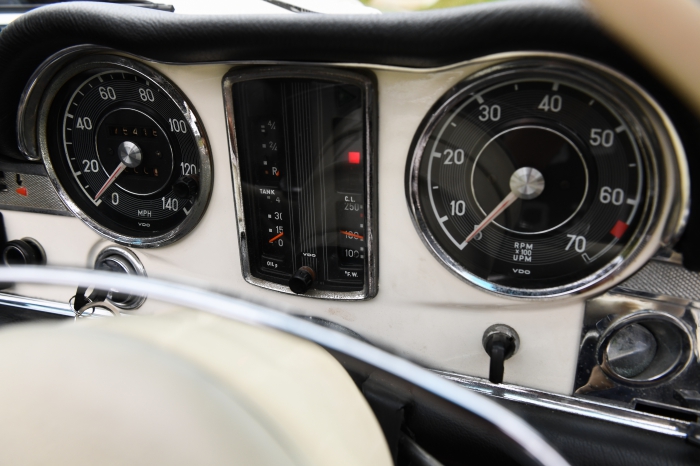
We’d never imagined the W113 could feel modern until we drove the 190SL.
Compared to the latter, the controls on the 280 SL W113 are such that you could use it as a daily-driver, even to this very day.
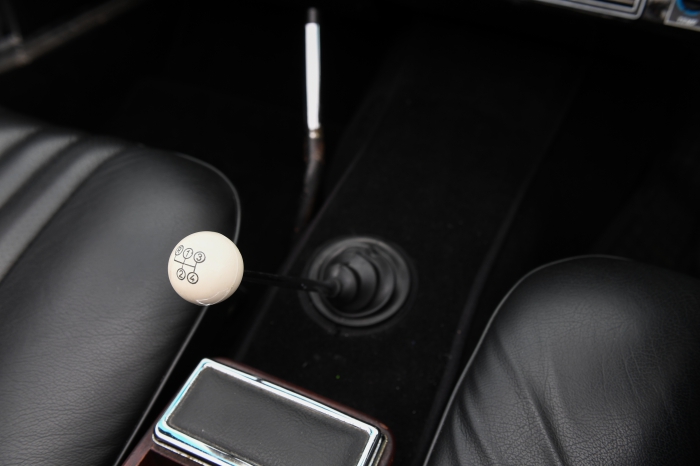
Like the 190 SL, you don’t hurry the W113 along, because you need to co-ordinate the shifts of the four-speed manual with the clutch and gas inputs to make properly brisk yet genteel progress.
It is possible to carry a decent turn of speed with the car, but we would have preferred an overdrive fifth gear on the 280 SL for highway cruising purposes, especially since its performance hike over the 250 SL and 230 SL – as well as the original 190 SL – meant it was capable of hitting the high notes relatively easily.
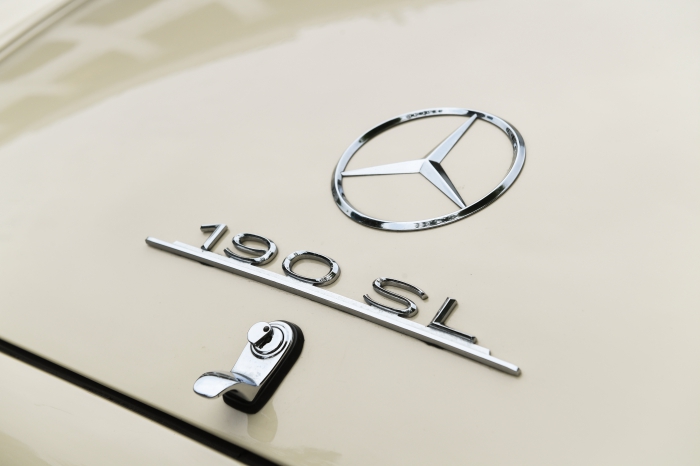
The 190 SL was a single model, but the W113 would see three different stages to its life-cycle from 1963 to 1971: 230 SL, 250 SL and 280 SL.
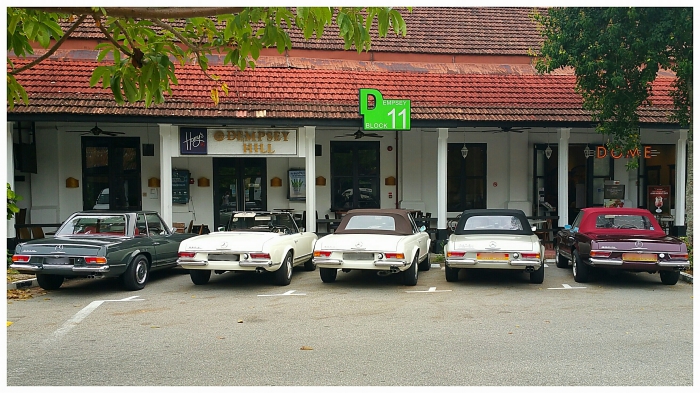
According to our reference material, the 250 SL saw the smallest production volume at only 5000+ cars built, compared to the 20k of the 230 SL and the 24k of the 280 SL.
What’s interesting is, despite the various engine iterations, Mercedes-Benz didn’t inflict major changes to the Pagoda’s classic lines, which is a testament to the car’s design.
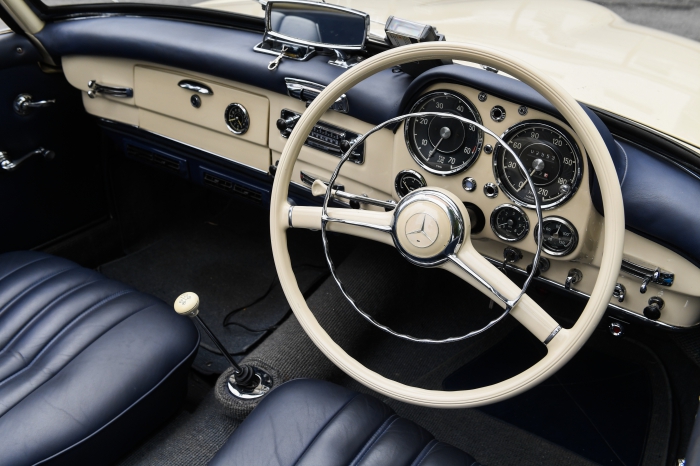
In spite of their grand tourer credentials, the 190 SL and 280 SL can be cattle-prodded into serving up surprisingly spritely responses, especially when wrung out towards their redlines.
Although the 190 SL’s performance figures are better reserved for boulevard cruising than hot-rod-baiting, the 280 SL’s 170bhp and 240Nm allow it to remain relevant in the city today, especially since the second to third gear pull is remarkably punchy.
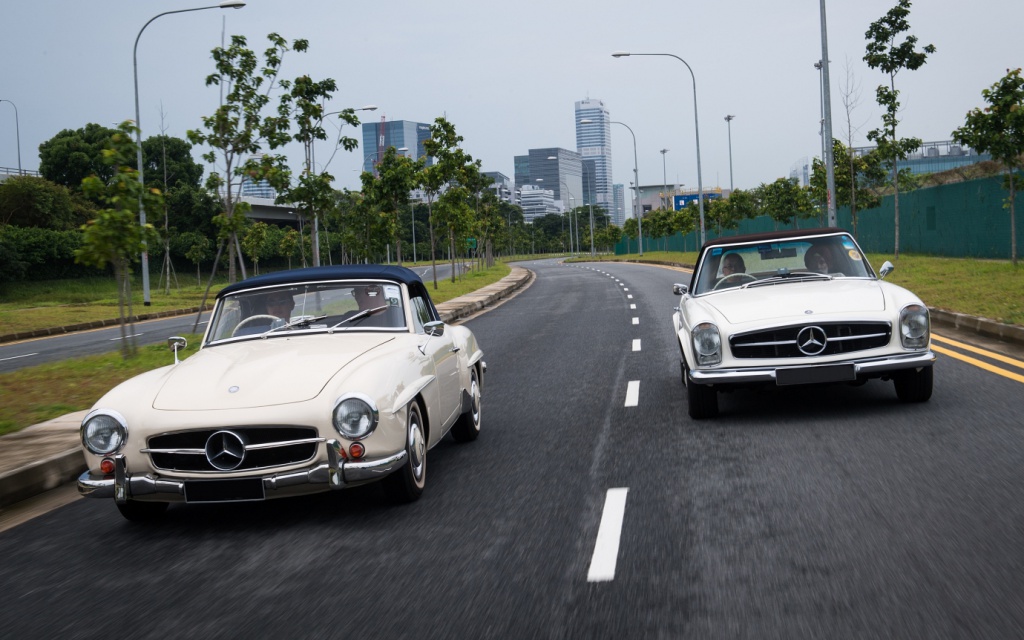
Although it’s possible to drive the Pagoda in anger, it’s better to maintain a Zen tranquility when you’re within its confines.
Even if the ride quality is more plush than performance, there’s still a good degree of control that lets you pilot it reasonably accurately through a series of corners.
At full pelt through each gear, there’s an almost uncharacteristically angry rasp that erupts from the tailpipes like a swarm of angry hornets from their hive.
W113 280 SL
Engine: (M130) 2778cc, inline6
Power/rpm: 170bhp/5750rpm
Torque/rpm: 240Nm/4200rpm
Transmission: 4spd manual
0-100km/h: 11secs
Top speed: 200km/h
W121 (B2) 190 SL
Engine: (M121) 1897cc, inline4
Power/rpm: 103bhp/5700rpm
Torque/rpm: 142Nm/3200rpm
Transmission: 4spd manual
0-100km/h: 12.2secs
Top speed: 171km/h
Silver Lining – R129 300 SL
We included this fourth generation SL because it’s the first of the modern SLs (designed under Bruno Sacco, this was arguably the most masculine so far) to feature an electrically-actuated soft-top, advanced rollover protection system and came following the R107’s close to 20 years of production, which saw almost 240k units of its predecessor made.
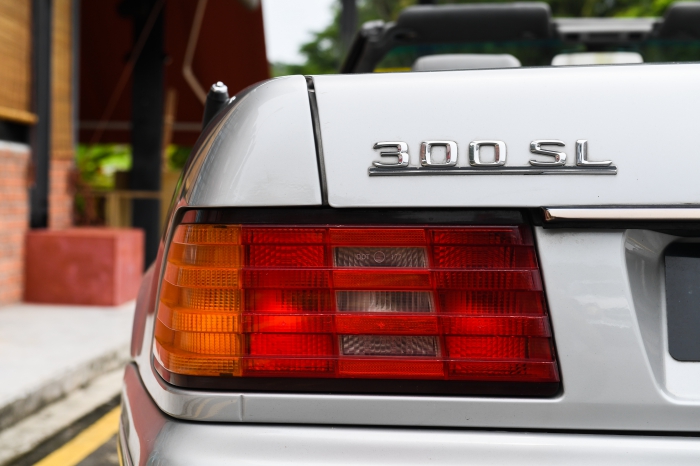
This is a first generation, one-owner-from-new 300 SL; later models would adopt the ‘SL XXX’ naming convention that has carried down to this day, because the brand rightly felt that the model identifier should logically come before the engine size identifiers.
Compared to its immediate predecessor, the R129 wasn’t just wider and longer, but its body structure was 60 per cent more rigid, and even with its soft-top down, was torsionally stiffer than a R107 with the hard-top on.
However, the added weight due to the combination of strengthened body (to resist deformation in a crash), automatic rollover system and electro-hydraulic powered roof hardware saw an extra 90kg added to the car over its model counterpart from the previous R107 generation.
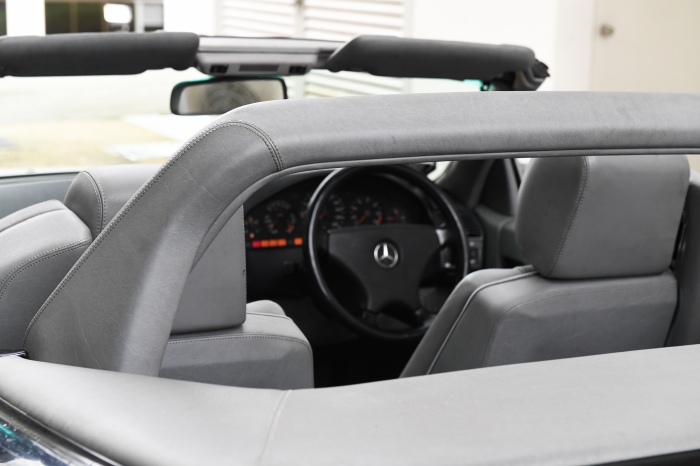
The rollover hoop was an elegant construction, which relied on sensors to detect the car’s angle to the vertical, as well as if one or more wheels were on full rebound, before raising a thick rollover hoop that was otherwise concealed behind the rear seats.
This was the last of the SLs to feature a manual hard-top, and like before, was a two- to three-person job to mount and dismount even though it was lighter than the R107’s – thanks to its aluminium alloy construction.
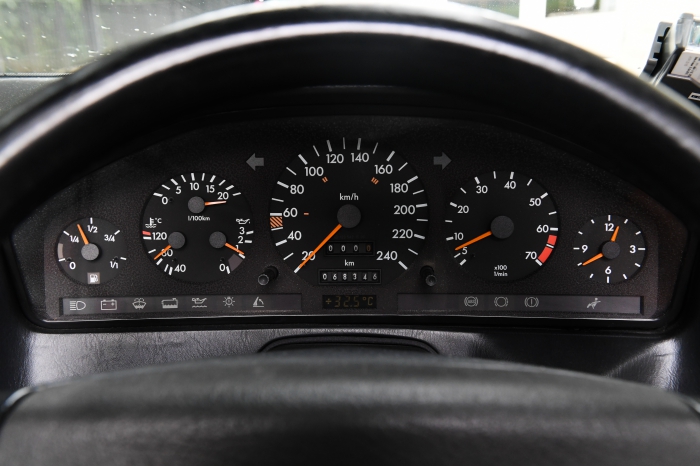
From this generation onwards, the engine/powertrain combinations were developed with a mind to be shared with the S-Class of the era, so the SL was a technology crucible for the latest innovations that could later be cascaded down the model line-up.
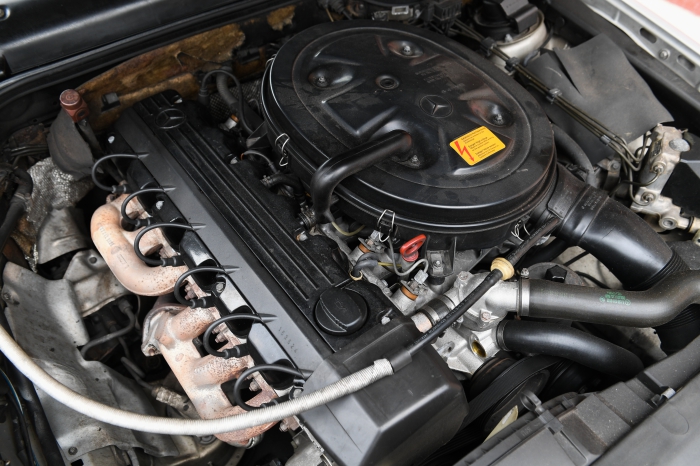
At the heart of the 300 SL beats the 3.0-litre ‘six’ carried over from the R107, which was tuned for 187bhp and 260Nm.
It’s more cruiser than bruiser, and while it took awhile to get there, once at speed, it was an unflappable, force of nature that one could comfortably take to within a hair’s breadth of its top speed rating.
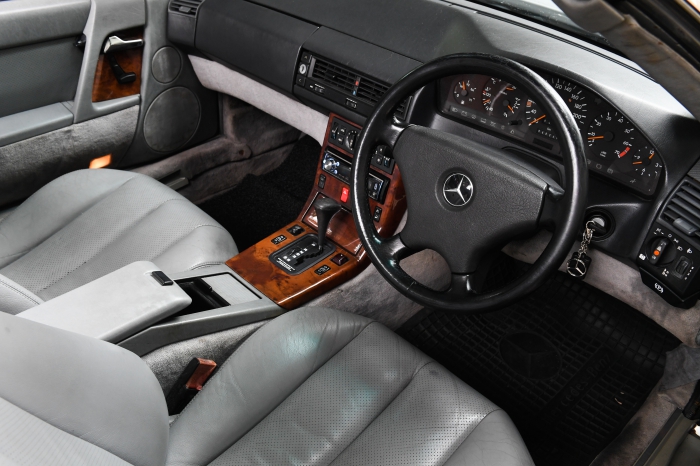
Even by today’s standards, the four-speed automatic’s shift quality never feels jarring or out-of-sorts and the ride quality on the 16-inch stock footwear soaks up bumps and other imperfections with aplomb.
However, if you wanted more performance, this generation also marked the debut of the ‘official’ AMG models that were sold at the Mercedes-Benz showroom, as opposed to merely being AMG-tuned from before.
R129 300 SL
Engine: (M103) 2960cc, inline6
Power/rpm: 187bhp/5700rpm
Torque/rpm: 260Nm/4500rpm
Transmission: 4spd auto
0-100km/h: 9.5secs
Top speed: 223km/h
Bleu Hue - R231 SL 400
Sequels are funny things, but in the case of this R231 facelift, it looks like Mercedes-Benz has gotten the front styling spot-on – we’re less enthused by the test-car’s fashionable Brilliant Blue shade though.
Naturally, the rump-end looks heavy, a trait typical of most retractable hard-top roadsters, but there’s a sporty balance to the overall proportions of the car.
Take a long hard look at the new front-end and you can just about spot some inspiration from the original SLs, the Pagoda and the 190 SL.
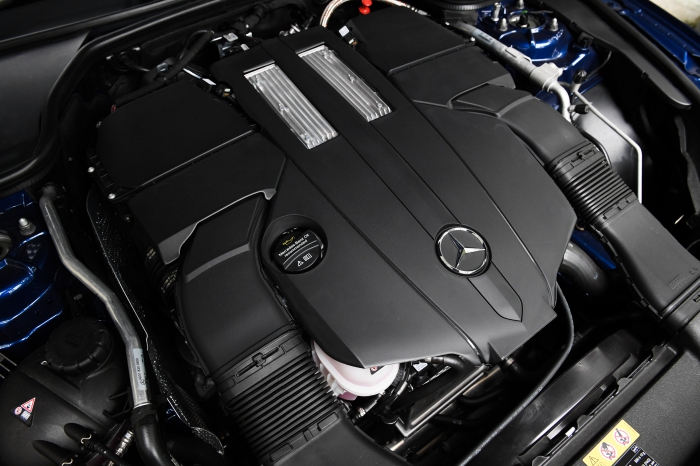
The 4Matic ‘43’ AMG models have started hitting the showrooms and roads, but the SL 400 lets you enjoy the biturbo 3.0-litre V6 from these ‘43 AMGs’ in rear-drive guise (albeit in slightly detuned state), much like the SLC 43.
With the current trend towards downsizing, we take some consolation in the fact that at least it’s a V6, instead of some highly-tuned four-pot at the heart of a flagship model like the SL.
Of course, trick differentials such as the system found in the latest E 63 S 4Matic+ are able to shuttle all the performance to the rear wheels, but there’s something to be said for the straightforward honesty of a good’ol rear-drive machine.
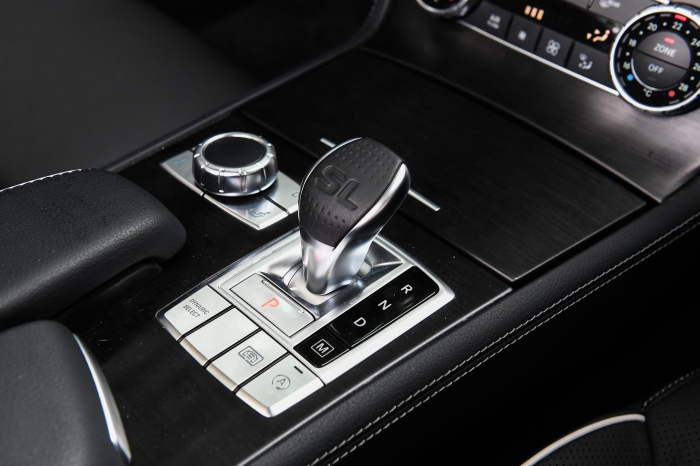
We like to think that the SL 400 is the sweet spot of the range; too much performance and it threatens to upturn everything the SL stands for: civilised and luxurious cross-country touring.
As you move up the performance hierarchy, things like ride quality tend to suffer, so although an AMG variant might be able to accelerate faster, brake harder and corner sharper, it might not be as sanguine a companion over a mish-mash of road types one might encounter on road trips up North.
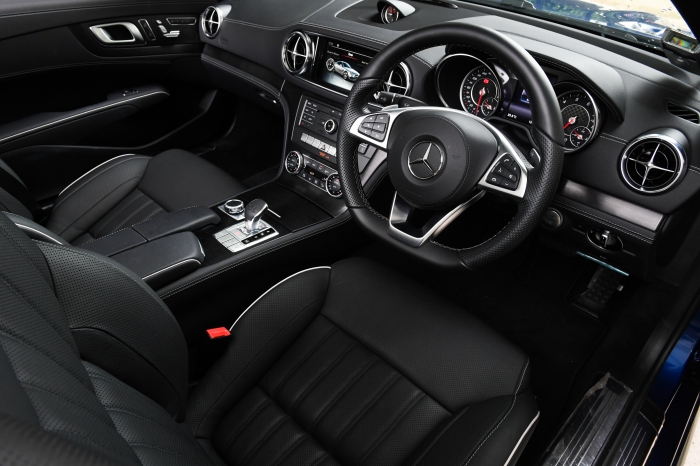
After the relative opulence of the body-coded interiors of the W121 and W113, there’s almost a stark simplicity to the R231 that belies its status.
We’re not referring to a lack of equipment, because the SL 400 is decently specc’d, but rather the tactile quality of some of the controls just isn’t there.
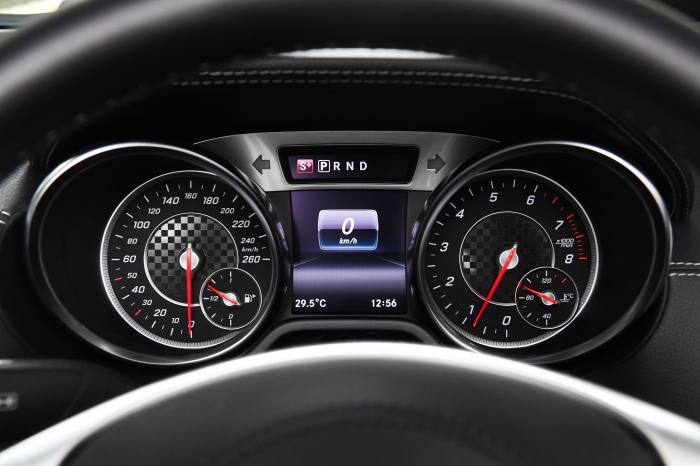
Like the first two SLs, the latest features classic circular instruments, albeit with modern display technology for enhanced legibility.
We understand that the optional analogue-style central clock is meant to recall the one from the 190 SL, but the fonts and illumination, which echo the instrument cluster, somehow doesn’t impart that same sense as classy gravitas as the original’s.
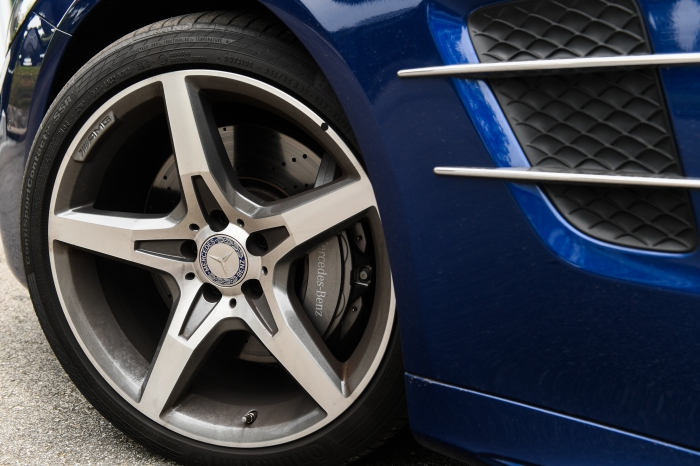
There’s admirable shove from the V6 to propel the 1.7-tonne kerbweight SL with alacrity, but the pace is brisk rather than ballistic.
Pedal-to-metal acceleration will see the 100km/h sprint from standstill dispatched in just under five seconds, with the 9spd automatic transmission serving up slick, seamless and authoritative shifts.
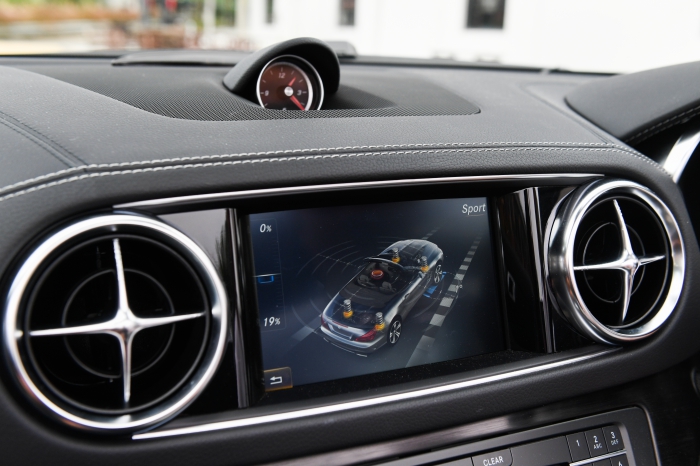
The steering is lightly weighted, but there’s a direct enough connection between the driver and the car to allow for quick direction changes.
Different drive programmes help keep you and the car on-the-boil so you can go from A-to-B commute to red mist with the push of a button.
The engine is more fast than furious, which we feel suits the nature of this beast to a T; after all, it’s well above point-and-spurt hot-hatch-baiting.
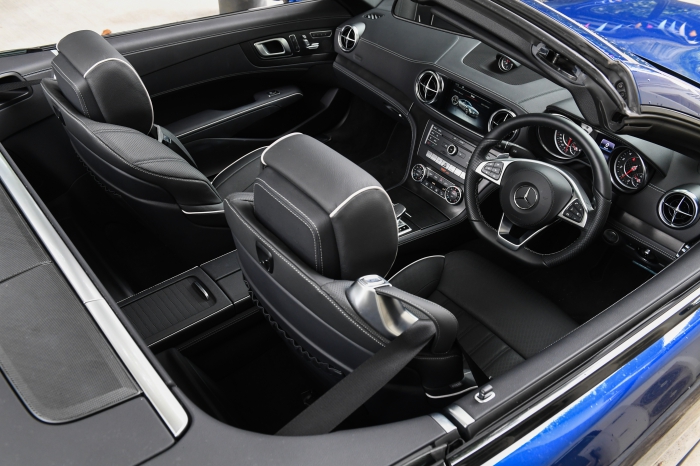
Thanks to the 500Nm blast of turbo torque, you never feel the weight (or size) of the car, and it makes light work of going quickly.
In fact, the SL 400 is remarkably easy to drive, thanks to its great visibility and sublime manners, while the nine-gears mean it cruises at highway speeds with the engine revs kept low.
In particular, the brakes are a strong suit and offer prodigious stopping power even from higher speeds.
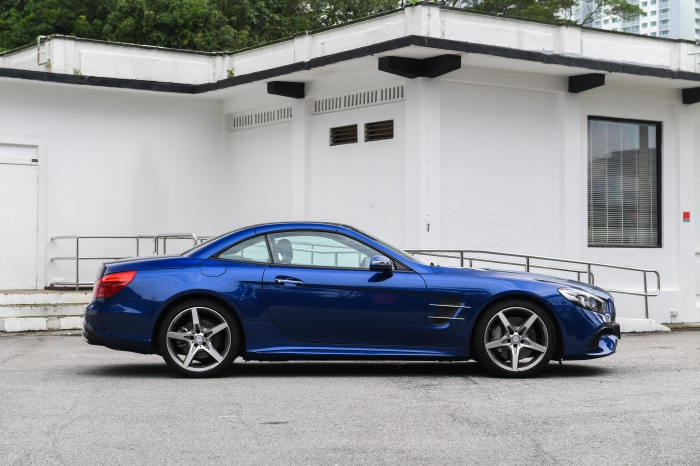
It isn’t only easy to drive/park/manoeuvre, but the SL 400 is also not regarded an example of conspicuous consumption.
Unlike certain marques and models that attract the ire of the masses on the roads and keys in the carparks, the SL is pretty much above such pettiness and passes unscathed through the ranks of the hoi-polloi.
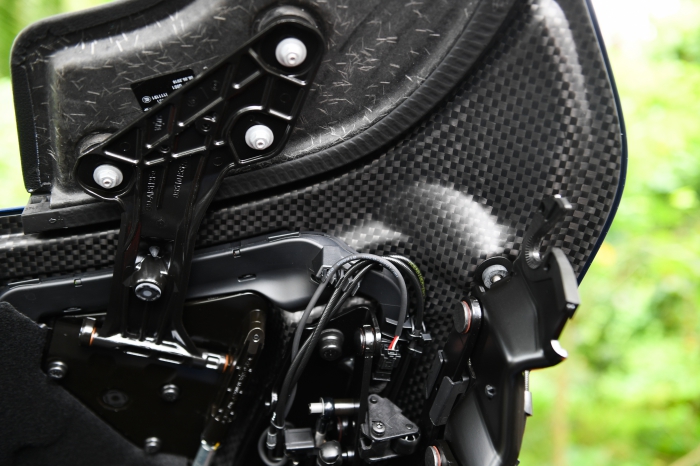
Merc moved to retractable hard-tops after the R129, but we’d have thought this meant it would be a lot easier to put up/down the roof on the move.
Here’s the catch with the SL 400, the roof will work when the car is in motion, BUT… and here’s the big ‘but’, it needs to be fully stationery before the operation can begin – once it has started the car can be in motion again at speeds of up to 40km/h for it to complete the process.
This is fine for when you start the process while you’re stopped at the lights and it changes to green so you have to move off, but less useful when it starts raining when you’re on the move, because the closing cannot be initiated till the car is at a standstill.
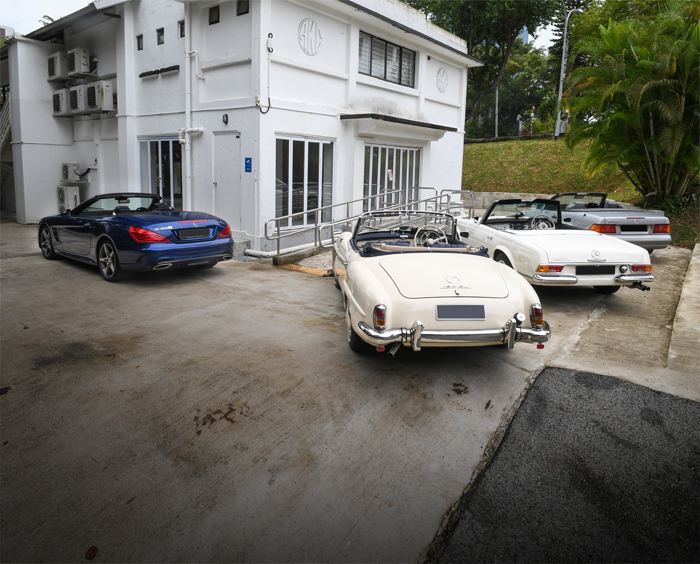
The SL is a lot like a Rolex sports model, in a sense that it attracts an ‘uncle’ stigma from the folks who only think they know better.
Rolex is a brand that many watch collectors and enthusiasts tend to start with, before their journey in collecting takes them through the perceived ‘serious’ brands and inevitable independents, before eventually coming back full circle again to Rolex.
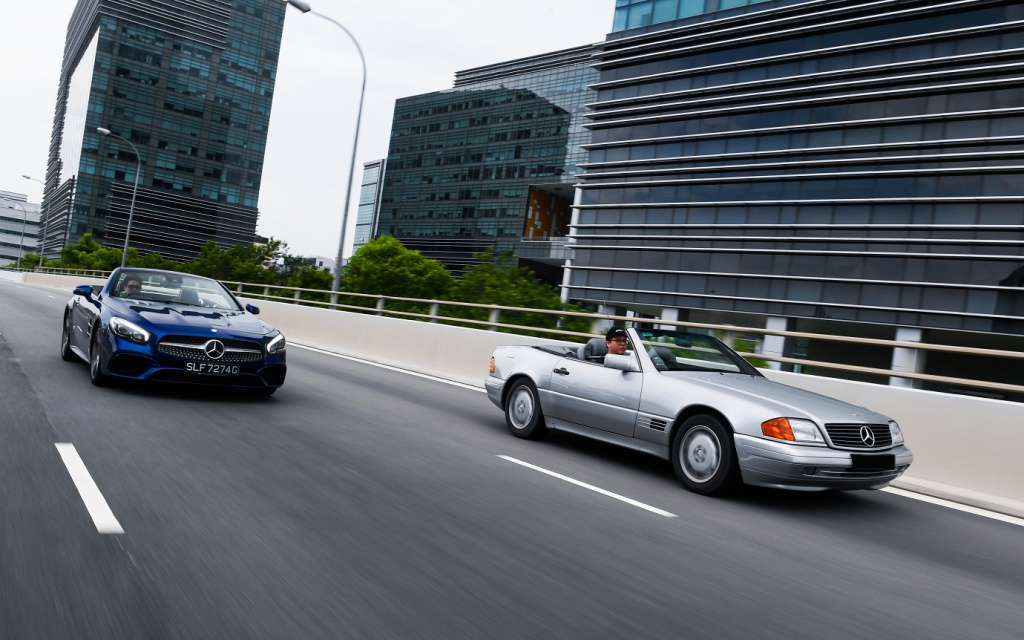
Don’t believe us? Ask the long-time collectors who have gotten tired of the constant barrage of ‘special editions’ from the various brands, I’d bet my bottom dollar they continue to maintain a collection of modern and vintage Rolex sports models.
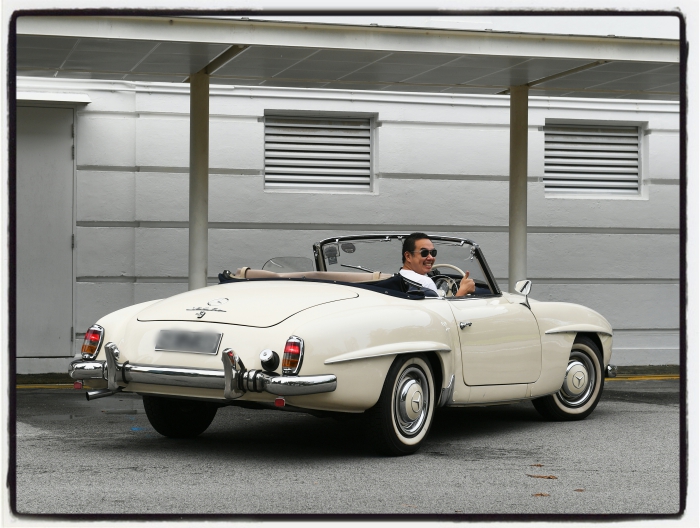
By that same token, the SL will appeal to those who have already tried and tested the other flashier machines in the S$450-500k segment, but realise that Mercedes-Benz is still the star in their eyes...
PHOTOS Zotiq Visuals
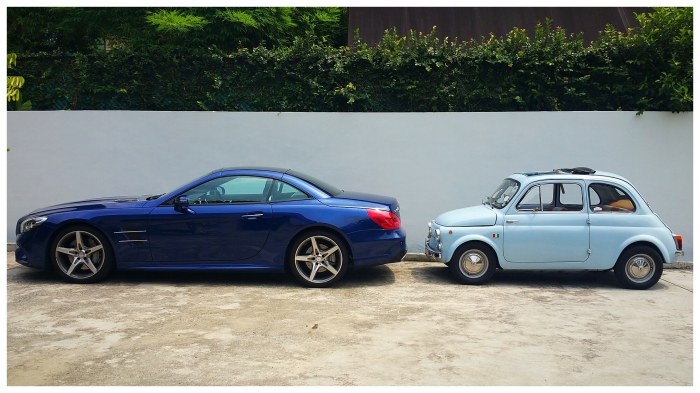
R231 SL 400
Engine: 2996cc, V6, biturbo
Power/rpm: 367bhp/5500rpm
Torque/rpm: 500Nm/2000-4200rpm
Transmission: 9spd auto
0-100km/h: 4.9secs
Top speed: 250km/h (electronically limited)
Fuel consumption: 7.7l/100km
CO2: 179g/km
